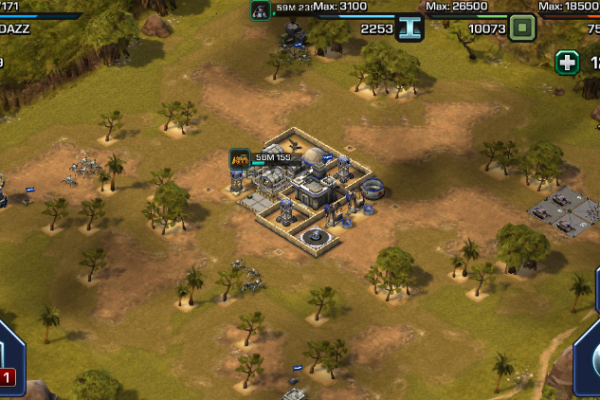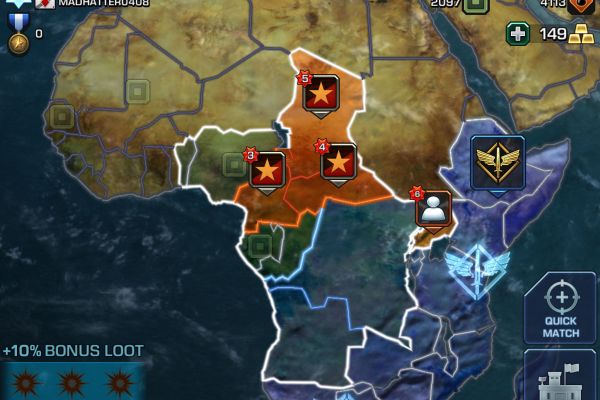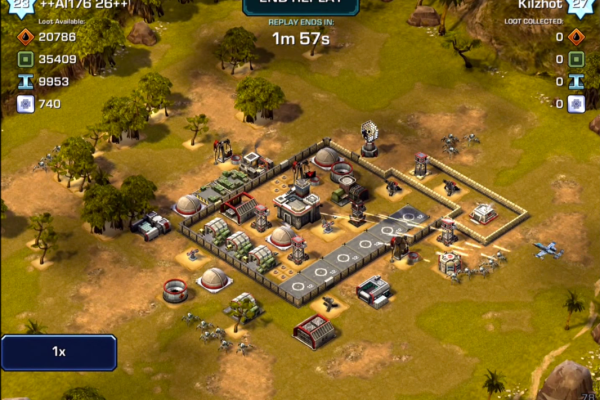
Empires & Allies (E&A) is the mobile reboot of Zynga’s facebook title by the same name. The Facebook game attracted an impressive 39 million players within its first month (June 2011), but was shut down less than two years later. The mobile game is real time rather than turn based and features realistic graphics as it’s key selling point.
This is a big title for Zynga, the released the same day it announced restructuring that would make about 18% of its workforce redundant. The game has been in soft launch in various countries for 9-10 months according to the company, but after playing 3-4 sessions a day for over two weeks now, I have serious doubts whether the game will live up to expectations, despite some initially encouraging figures.
Game loop
The core game is very similar to Clash of Clans and Boom Beach, so much so that even sketching out the game loop is redundant. Players build a base, farm resources to make troops and raid other players bases for more resources and glory. Like Boom Beach troops are deployed in small groups rather than individually, and the player has a small amount of control of their troops during battles via various special abilities (A-10 bombing runs, setting waypoints, etc.). A small number of PvP opponents are placed on the world map where the PvE campaign happens, but players can equally tap a quick match button to dive straight into the action.
The mix of mechanics from various mobile RTSs feels confused and in many cases works against itself. For example the game gives the player walls to help defend their base, at contrast with the modern day setting. As well as being fiddly and annoying to place, these encourage players to group their buildings together – a poor tactic considering the area effect of the various bombing run special abilities.
The special abilities also offer attackers a considerable advantage – one that Boom Beach offsets by giving attackers only a limited space to deploy their troops (on the beach). E&A recognises the benefit of doing this in the PvE campaign, where it happily (but arbitrarily) restricts the attackers deployment zones. In PvP however, players can deploy their troops wherever they like, which is a huge advantage when combined with the ability to take out key defences remotely, especially if grouped together with special abilities. As a player my attack power vastly outperforms my potential defensive power, with the result that I have completely neglected developing defences that I know to be totally inadequate against players my own level.
Economy
Economy wise, E&A has four main resources that come into play one after the other in a similar way to Boom Beach. Whilst the player is given just one builder, also like BB, hard currency gold is given out sparingly in exchange for completing achievements, closer to Clash of Clans. This combination of a single builder and little hard currency is a serious error in my opinion, and has led to over a week (at 3-4 sessions per day) when I have had little incentive to attack, and consequentially little fun.
In Boom Beach the single builder works because they give out a lot of gems to speed up building. Where you spend your gems is part of the game, even for a non payer, and considerably accelerates the otherwise tedious period when you need to upgrade lots of buildings on short timers. In Clash of Clans having two or three builders not only provides an obvious first purchase (and then creates a shortage of resources later), but makes brief sessions satisfying as the player can collect their resources and set several upgrades in progress at the same time. In order to have the resources for this players need to start raiding regularly and so the game hooks players into its loop.
In E&A players have neither the gold they need to speed up short timers and recycle their builder more frequently, nor the lack of resources to prompt attacking. Many of my sessions are extremely short and unsatisfying, consisting of collecting resources and then setting a single upgrade in progress. This cycle has continued for 7-10 days straight without a significant increase in power for my base or my troops. Hardly inspiring, engaging stuff.
Alliances
Perhaps one of the most disappointing aspects of E&A is the alliance system. At first glance it looks promising, offering private as well as communal chat, the ability to have friends as well as alliance members, and really nice feature that gives other alliance members resources whenever you successfully attack someone, giving a good incentive to be in a large, engaged alliance.
However, becoming a member of an alliance was an incredibly frustrating experience, drawn out over the course of several days. No alliances are suggested to new players, and the only way to search for alliances is by name – a daunting task for a newbie player if they have no friends playing the game. I was shocked that there was no way to find local alliances or alliances with players of a similar standard to myself. After days of randomly sending out join requests to alliances that came up when I searched for “A…” or “B…” I finally set up my own alliance and dropped the details into the design chat at Wooga – 50 odd gamers generally eager to try new games if only to check them out before they decide whether or not to commit longer to them. For me this was a modest success, and I eventually ended up with an alliance numbering 5 players, but for players that don’t have access to such a ready pool of alliance members, I wonder what they would do.
“Getting people into an alliance is more important to us than getting money from them.” – Gabe Leydon (CEO Machine Zone)
Alliances are such a vital driver of retention that driving players to join one should be of paramount importance to a game. In Game of War Machine Zone admit that players who don’t join a guild within the first two or three days have nearly zero probability of sticking with it longer. In E&A the game seems to actively conspire against players joining an alliance, in stark contrast the games that it is competing with.
Marketing
In my opinion, the graphics and marketing of E&A are the make or break factor. They are far more realistic than most other games in the genre, and the use of iconic units such as A-10 Warthogs definitely makes the game stand out from the cartoony Supercell games.
Whether or not the graphics allow the game to stand out on the App Store is another matter. The added realism of the game detracts from the ability to place identifiable characters in promotional graphics. There is no Clash of Clans Barbarian or Boom Beach Heavy to be a front man for the game. The result is a look that feels both eye catching and generic at the same time.
As I’ve described above, E&A lacks the polish and synergy of features that it is up against in CoC and BB. It also has exactly the same monetization strategy and features, which can only lead me to believe that the Life Time Value (LTV) of players will struggle to match these games. Without an installed base of players, together with clan wars and events to drive long term engagement, it is likely to be significantly lower. Of course these features could be added later, but this will take time, and E&A will need to demonstrate that it is worthy of committed investment by Zynga first.
So the question becomes what is the Cost per Install (CPI) of players? Do the realistic, but generic graphics appeal to a new set of players that is currently untapped by the incumbents? If so, are there sufficient numbers of these players to bring the CPI significantly below what other games are paying? If so, then the game could be profitable on a CPI vs. LTV basis despite its various flaws. If not then other games will be able to outspend it on a per player basis, driving up the CPI to a point where it exceeds the LTV, and Empires & Allies cannot recruit new players on a profitable basis. In this scenario, even if the game attracts a number of players initially through featuring, its player base and revenue is destined to gradually decrease.
For me this reinforces the importance of product marketing in today’s mobile market. Making a fun game is not sufficient to ensure success. Games have to be able to drive their LTV up with a robust monetization strategy, and drive their CPI down with a distinct and attractive marketing message. This is the only way they can carve out space for themselves against heavily entrenched incumbents that have vast installed player bases with considerable time invested in their games, and huge amounts of money to throw at recruiting and retaining players.
Zynga could have tested its market positioning for Empires & Allies even before starting production. The question is whether they did. If the basic positioning is strong enough then the design flaws can be ironed out and new features added to further improve upon the game, giving it the prospect of sustained success. If as I suspect the graphics are not sufficient to significantly lower CPI, then whatever initial success the game enjoys due to featuring and paid marketing will soon fade away. For now it’s too early to tell, but the download and revenue figures over the coming weeks will soon make it clear which way the game will go.
This post was originally published on Adventures in Mobile Game Design.


